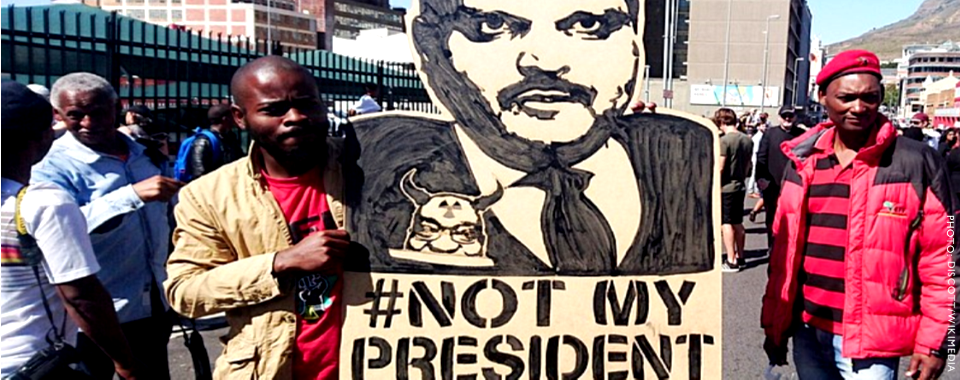BY OLIVER CHANDLER
South Africa grabbed the headlines for all the wrong reasons in 2017 with political brawls, corruption allegations, cabinet reshuffles and political infighting. In August, South African President Jacob Zuma narrowly survived an eighth vote of no confidence in his leadership, only to be usurped as leader of the African National Congress (ANC) Party by Cyril Ramaphosa in December. These events follow long-running claims of corruption against Zuma and his cohort. Under former president Thabo Mbeki, Zuma was dismissed from his role as Vice-President after being implicated in a corruption scandal and accusations continued throughout his presidency.
But worryingly for South Africa, the Fragile States Index (FSI) also demonstrated that these were simply the latest events in a long-term decline. In the 2017 FSI, South Africa ranked as the most-worsened country over the preceding decade that was not in a state of conflict, with a ten-year worsening trend that was matched only by the likes of war-torn Libya and Syria for the magnitude of its negative rate-of-change.
In the 2018 FSI, the news is no better. South Africa continued its worsening trajectory as the political theater surrounding President Zuma and the ANC rumbled on. South Africa’s overall FSI score worsened by 0.6 in 2017, following a worsening of 2.5 and 2.9 in 2016 and 2015 respectively, a worsening that can be largely attributed to infighting among the political class and eroding state legitimacy.
South Africa’s Factionalized Elites score worsened for the second consecutive year due to rising tensions within the ANC and between political parties that publicly manifested themselves in February when President Zuma’s State of the Nation Address was interrupted as protests by opposition MPs degenerated into fistfights. Late March then witnessed a controversial cabinet reshuffle, including the dismissal of well-respected Finance Minister Pravin Gordhan. The move was publicly condemned by Deputy President Ramaphosa, the ANC’s allied South African Communist Party (SACP), and by the two major opposition parties; the move also resulted in the downgrading of the nation’s credit rating to junk status. A second reshuffle in October, which saw changes in six portfolios including the Ministry of Energy, was seen as having two motives: to remove vocal critics and to secure a controversial multi-billion dollar nuclear energy deal with Russia that the Western Cape provincial High Court had ruled unlawful and unconstitutional in April.
The infighting among the political class also coincided with an erosion of state legitimacy, which worsened by a further 0.3 this year after a worsening of 1.5 last year. This declining faith in the state manifested itself in frequent and widespread protests and civil unrest. In April, after the downgrading of the country’s credit rating, tens of thousands marched across the country calling for President Zuma’s resignation. In September, the Congress of South African Trade Unions (COSATU), which operates in an alliance with the ruling ANC, led marches against corruption and calling for Zuma’s ouster. The protesters got their wish with Zuma’s departure in early 2018, albeit after the 2018 FSI’s period of analysis, meaning that any potential positive effects on South Africa will not be measured until the 2019 FSI.
After replacing President Zuma as party leader, Cyril Ramaphosa was elected president by Parliament after Zuma’s resignation. There is cautious optimism among many that a Ramaphosa presidency, which is widely expected to win the upcoming 2019 general election, may alleviate the corruption and political infighting at the heart of South Africa’s fragility. However, skeptics worry the change is merely a superficial and inadequate solution to a problem that can only be resolved by broader political change and the displacement of the ANC as the ruling party. Far from predicting how these changes will be felt and what effects they may have on South Africa’s 2019 FSI score, if the years of the Zuma Administration are any indication, the only way is up.
